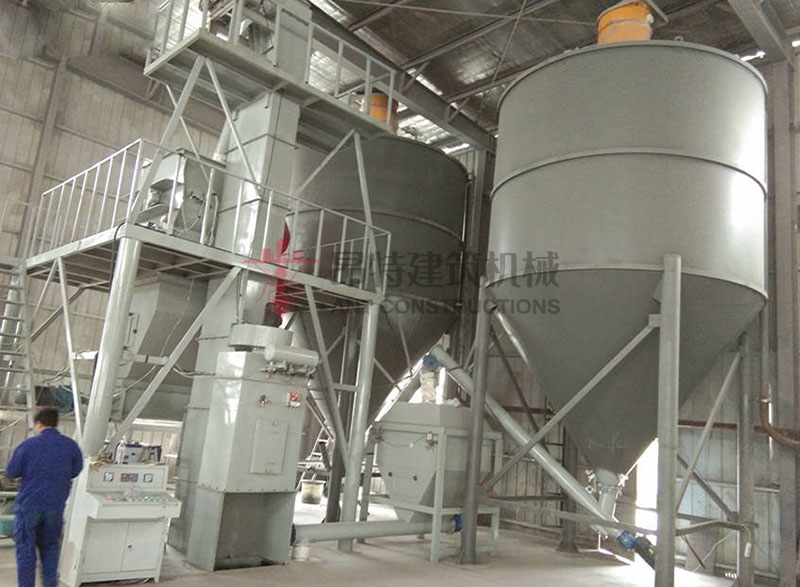Recycle the waste from cement sand mortar mixer machine
Author:ANT CONSTRUCTIONS Comefrom: Createdate:2021/2/24 8:44:21 Hits:63
Recycle the waste from cement sand mortar mixer machine
How to recycle the waste materials generated by cement sand mortar mixer machine for producing tile adhesive?
The main raw material contained in dry mortar is sand, and the amount of raw sand used in the production of dry-mix mortar is quite large. The amount of sand used in construction in China is about 1 billion tons per year, and with continuous mining, domestic natural sandstone resources are smaller and smaller, the sand price is getting higher and higher, and the contradiction between supply and demand is prominent.
In this case, it is necessary to find a solution for this problem by replacing natural sand with artificial sand. Waste from mines or waste limestone from cement plant tailings, or industrial solid wastes such as construction waste, coal gangue and steel slag can be crushed and sieved to produce artificial sand for dry mortar, and it doesn't have any adverse effect on product quality, you can use it with confidence.
After such a solution, not only the waste is recycled, but also the pollution and damage to the environment are reduced. It can be said that it is fully in line with the circular economy concept advocated by China and will help the further development of dry mortar production enterprises.
Dry-mixed mortar is compared with traditional mortar. Traditional mortar is mixed and used at the construction site. It needs to occupy a certain position, and the powder will cause certain environmental pollution on the site. At the same time, these materials are piled together on the open mud, resulting in more a lot of impurities and mud, a lot of inaccurate measurement, it is difficult to control and randomly sieving aggregates, resulting in high porosity, large shrinkage and poor impermeability, which may eventually lead to blank plastering of external walls, cracks and penetration occur.
On the contrary, all the components of dry powder (mixed) mortar are accurately mixed and evenly mixed in the production workshop, and then stirred on site according to the determined water-cement ratio. It overcomes the problems of inaccurate measurement, environmental pollution, and excessive mud content. It has less water , Small shrinkage, strong bonding, crack resistance, impermeability, etc., can basically meet the requirements of new wall materials.
The dry-mix mortar equipment starts the feeding device according to the process batching sequence. When the material is quickly fed to the metering hopper to an approximate value (determined when the specific value is adjusted), the fast feeding device stops. The fine feeding device continues to feed and gradually approaches batch.
Taking into account the amount of suspension, the fine feed device is gradually decelerated and stopped in advance (determined when adjusting the amount), and at the same time, the shut-off valve is immediately closed to intercept possible collapse. The meter records the amount of material to be taken at any time. After the fine feed device stops, the delay is at seconds. After the stationary device stops, the stable display value of the meter is the processing batch of the first material. Next, the second material starts to repeat quickly The above process goes to the metering box until the entire batching process is completed.
Your dry mix specialist for dry mortar, limestone and all concrete building materials. Each mixer designed and configured individually in order to meet your specific mixing requirements. With over 20 years of industry experience Ant Construction have been at the forefront of producing the dry mortar mix plant, at Ant Construction, we offer high quality products alongside expert advice and good customer service.








